Citizen diplomacy in the 1980’s
Discover how Cold War tensions, people-to-people exchanges, rock concerts, space bridges, and bold joint ventures shaped U.S.–Soviet citizen diplomacy—and sowed the seeds of post-Soviet Russia’s transformation.

Citizen diplomacy in the 1980’s
Discover how Cold War tensions, people-to-people exchanges, rock concerts, space bridges, and bold joint ventures shaped U.S.–Soviet citizen diplomacy—and sowed the seeds of post-Soviet Russia’s transformation.
About
About
It is impossible to understand Russia of the 1990s and 2000s without looking at some of the salient aspects of its Soviet past, particularly the Cold War. The Cold War was a conflict of two universalist systems trying to triumph over the other and impose their own values and institutions. Both systems arose from European ideas and history. Soviet universalism was linked with European Marxism and utilized anti-imperialism as weapon against the West, through alliance with liberation movements in former colonies. Cracks began in the so-called Iron Curtain on both sides for different reasons. On the US side, activists and organizations that grew out of the counterculture and peace movements of the 1970s began to focus on the existential danger of nuclear war and were searching for ways to prevent a nuclear exchange. On the Soviet side, intellectuals were looking for ways out from the stagnation of the late Soviet period through exploring human potential and with interest in new computer and information technologies being developed in the West. As groups on each side found each other and began to build working ties, a whole citizen diplomacy movement began that blossomed in the perestroika era.
The citizen diplomacy movement believed that through breaking the communications barriers between the West and the Soviet Union and through people-to-people contact, war could be avoided. The activists of this movement broke new ground using new technologies like the satellite telecommunications that enabled the rock and roll concert exchange of the US Festival in 1982, supplemented by increasing personal contacts and travel by peace activists to the Soviet Union. This period was a prequel for the much broader and deeper interactions between Americans and Russians to follow in the 1990’s. It was a movement that sowed the seeds of American promotion of civil society organizations and American Soviet joint ventures as private sector prototypes that blossomed in post-Soviet Russia.
In this section, there are extensive interviews with many of the pioneers of the citizen diplomacy movement, which was initially non-governmental private groups supported by wealthy individuals and peace organizations. There was a strong belief at the time that if Americans and Soviets could talk to each other and learn about each other a nuclear war could be averted.
Topics in this section include the people to people exchange activities of the Esalen Institute and Project Harmony; space bridge TV shows between the US and the Soviet Union; sister city organizations; US musicians John Denver, Billy Joel and the Paul Winter Consort to the Soviet Union; Association of Space Explorers (both astronauts and cosmonauts) and perestroika era joint ventures, i.e. Dialog, Perestroika (commercial office space), and TrenMos, first American-style restaurant.
The citizen diplomacy movement believed that through breaking the communications barriers between the West and the Soviet Union and through people-to-people contact, war could be avoided. The activists of this movement broke new ground using new technologies like the satellite telecommunications that enabled the rock and roll concert exchange of the US Festival in 1982, supplemented by increasing personal contacts and travel by peace activists to the Soviet Union. This period was a prequel for the much broader and deeper interactions between Americans and Russians to follow in the 1990’s. It was a movement that sowed the seeds of American promotion of civil society organizations and American Soviet joint ventures as private sector prototypes that blossomed in post-Soviet Russia.
In this section, there are extensive interviews with many of the pioneers of the citizen diplomacy movement, which was initially non-governmental private groups supported by wealthy individuals and peace organizations. There was a strong belief at the time that if Americans and Soviets could talk to each other and learn about each other a nuclear war could be averted.
Topics in this section include the people to people exchange activities of the Esalen Institute and Project Harmony; space bridge TV shows between the US and the Soviet Union; sister city organizations; US musicians John Denver, Billy Joel and the Paul Winter Consort to the Soviet Union; Association of Space Explorers (both astronauts and cosmonauts) and perestroika era joint ventures, i.e. Dialog, Perestroika (commercial office space), and TrenMos, first American-style restaurant.
It is impossible to understand Russia of the 1990s and 2000s without looking at some of the salient aspects of its Soviet past, particularly the Cold War. The Cold War was a conflict of two universalist systems trying to triumph over the other and impose their own values and institutions. Both systems arose from European ideas and history. Soviet universalism was linked with European Marxism and utilized anti-imperialism as weapon against the West, through alliance with liberation movements in former colonies. Cracks began in the so-called Iron Curtain on both sides for different reasons. On the US side, activists and organizations that grew out of the counterculture and peace movements of the 1970s began to focus on the existential danger of nuclear war and were searching for ways to prevent a nuclear exchange. On the Soviet side, intellectuals were looking for ways out from the stagnation of the late Soviet period through exploring human potential and with interest in new computer and information technologies being developed in the West. As groups on each side found each other and began to build working ties, a whole citizen diplomacy movement began that blossomed in the perestroika era.
The citizen diplomacy movement believed that through breaking the communications barriers between the West and the Soviet Union and through people-to-people contact, war could be avoided. The activists of this movement broke new ground using new technologies like the satellite telecommunications that enabled the rock and roll concert exchange of the US Festival in 1982, supplemented by increasing personal contacts and travel by peace activists to the Soviet Union. This period was a prequel for the much broader and deeper interactions between Americans and Russians to follow in the 1990’s. It was a movement that sowed the seeds of American promotion of civil society organizations and American Soviet joint ventures as private sector prototypes that blossomed in post-Soviet Russia.
In this section, there are extensive interviews with many of the pioneers of the citizen diplomacy movement, which was initially non-governmental private groups supported by wealthy individuals and peace organizations. There was a strong belief at the time that if Americans and Soviets could talk to each other and learn about each other a nuclear war could be averted.
Topics in this section include the people to people exchange activities of the Esalen Institute and Project Harmony; space bridge TV shows between the US and the Soviet Union; sister city organizations; US musicians John Denver, Billy Joel and the Paul Winter Consort to the Soviet Union; Association of Space Explorers (both astronauts and cosmonauts) and perestroika era joint ventures, i.e. Dialog, Perestroika (commercial office space), and TrenMos, first American-style restaurant.
The citizen diplomacy movement believed that through breaking the communications barriers between the West and the Soviet Union and through people-to-people contact, war could be avoided. The activists of this movement broke new ground using new technologies like the satellite telecommunications that enabled the rock and roll concert exchange of the US Festival in 1982, supplemented by increasing personal contacts and travel by peace activists to the Soviet Union. This period was a prequel for the much broader and deeper interactions between Americans and Russians to follow in the 1990’s. It was a movement that sowed the seeds of American promotion of civil society organizations and American Soviet joint ventures as private sector prototypes that blossomed in post-Soviet Russia.
In this section, there are extensive interviews with many of the pioneers of the citizen diplomacy movement, which was initially non-governmental private groups supported by wealthy individuals and peace organizations. There was a strong belief at the time that if Americans and Soviets could talk to each other and learn about each other a nuclear war could be averted.
Topics in this section include the people to people exchange activities of the Esalen Institute and Project Harmony; space bridge TV shows between the US and the Soviet Union; sister city organizations; US musicians John Denver, Billy Joel and the Paul Winter Consort to the Soviet Union; Association of Space Explorers (both astronauts and cosmonauts) and perestroika era joint ventures, i.e. Dialog, Perestroika (commercial office space), and TrenMos, first American-style restaurant.
THE INTERVIEWS
THE INTERVIEWS

Subscribe to our newsletter!
You will receive our monthly newsletter with the most relevant Russia-related research news

